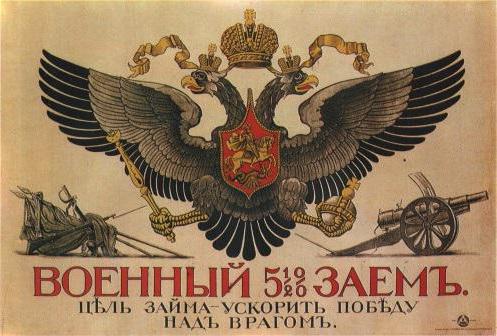NDC on bonds is a mechanism for paying interest income on debt securities. It makes it possible to sell them ahead of time without financial loss. To make it more clear, let’s cover the basic terms.

What is a bond?
A bond (from lat. Obligation - “obligation”) is a debt security securing the right to receive funds at a nominal value. In fact, this is a debt receipt with the only difference being that it is “issued” (issued) by the economic regulator - the exchange.
The issue of securities is called the issue, and its owner - the issuer.
The issuer applies to the registered exchange, which issues to the debt securities market with a certain face value - the value that must be returned at the time the bond expires.
Coupon bond
Investors, as a rule, buy securities on exchanges in order to make a profit. Or they want to keep their capital in reliable financial instruments. Depending on the yield, bonds are divided into the following types:
- Coupon.
- Discount.
- Mixed.
- With a floating interest rate.
We will not describe here each view in more detail. We are only interested in NDC on bonds. This concept directly refers only to the coupon type. What are these debt securities?
Coupon bond is a debt security with a fixed interest rate of par. For example, an investor purchased a bond in the market with a par value of 1,000 rubles. for 1100 rub. The payment term for it is one year. At first glance, it is possible to draw the wrong conclusion that the investor acquires a knowingly unprofitable asset, but this is not so. He is not interested in the value of the security itself, but in the coupon on it — payments for a certain period of time accrued interest. For a bond of 1000 rubles, our investor will receive income every 3 months, for example, in the amount of 200 rubles. Now the obvious benefit is looming: in one year it will amount to 700 rubles: 800 rubles. for the coupon minus 100 rubles. for loss of face value (purchase of 1000 rubles for 1100 rubles).
Now we come to the main concept of our article.
What is NDC on bonds
Our abstract example above is a standard of behavior in the investor market. However, the dynamics on it are such that only a small part of them are waiting for the payment deadlines to be paid at face value and coupon. Traders, brokers, speculators, investors every day sell and buy various stocks, bonds, futures, forwards, etc.
NDC on bonds is a recalculation of the yield on a coupon in case of sale of a security ahead of schedule. This is reflected in the name itself - accumulated coupon income. That is, the amount that has already been invested by the investor, but it is still necessary to wait a certain time to receive it on schedule. Money, as you know, must constantly work and be profitable. Therefore, many people sell bonds ahead of time - after they realized that they can earn more money from other investment products. The reasons for the sale, of course, may be other. We will not touch on this topic in detail, since it does not apply to ours.

Calculation formula
NKD, as a rule, is placed in a special section in the trading terminal. It is also published by various thematic sites, but we will talk about how to calculate the NCD yourself. To do this, you need to know the source data:
- Face value
- Coupon size.
- Date of last payout.
So, NKD is calculated by the formula:
NKD = BUT x (C: 100) x T: 365, where:
- BUT - face value of the bond.
- C is the percentage per annum at the coupon rate.
- T - the number of days from the date of accrual of the latest payments to the current date.
We give an example of calculation
Suppose we bought a coupon with a nominal value of 1000 rubles. The payout percentage is 10% per annum once a year. Suppose that the previous coupon payments were May 1, 2017, and we decided to sell the bond on May 10, 2017. Substitute all the source data in the above formula and get:
1000 x 0.1 x 0.027 = 2.7 rubles.
It follows that our bond with a par value of 1000 rubles “earned” 2.7 rubles for 10 May days in 2017. With this in mind, we will sell the security in the secondary markets. When buying coupon bonds, investors also calculate by determining the yield on them.

Taxation
So, we have already said that NKD on bonds is the income from a coupon bond when it is sold earlier than the due date. Do not forget that the amount received from NKD is subject to taxation. For ordinary citizens, the tax base for operations with securities is subject to a 13 percent income tax on individuals. However, it must be remembered that the purchase of securities together with the accrued VAT is not subject to taxation.
Example
We bought a bond with a par value of 1000 rubles with a coupon accumulated on it - NKD - 50 rubles. At the time of sale, we received a coupon of 100 rubles. Total, we will give 13% of the 50 rubles earned as income tax.

Federal loan bonds for individuals
In 2017, an event occurred that excited the Russian public: the Ministry of Finance announced the sale of “people's bonds”. Our citizens at the genetic level perceive such statements with hostility, since the experience of previous eras showed that trusting our state is a rather risky occupation. Despite this, a new investment tool has appeared - federal loan bonds for individuals, which is calculated, according to the department, for "Russians with a well-to-do income, who do not have deep knowledge and understanding of the functioning of the financial market."

Our citizens translated the above phrase into less beautiful words: "for the poor fools." However, the yield on them turned out to be slightly higher than that of a bank deposit and federal loan bonds on exchanges. We will talk more about this in the next section.
The yield of "people's bonds"
The yield on federal loan bonds for individuals is 8.5%. They can not be acquired by legal entities, as well as speculate on them - to resell in order to profit. In fact, “people's bonds” become an ordinary bank deposit. Many experts immediately had a question about why they are needed. They are unlikely to fill the Russian budget, since the volume of emissions is negligible. In addition, the yield of federal loan bonds on the stock exchange is lower by 0.5% than that of “people's” ones.  So far, this has led only to the fact that applications come from large wealthy investors, and they have not yet reached the masses of ordinary citizens. The head of the Ministry of Finance, A. Siluanov, hopes that such a measure will increase the financial literacy of the population and force them to pull significant amounts out of the pillow. Low inflation does not depreciate this money, so the hope remains that the population itself will invest it in the development of the economy. The concept of "Russian bonds" is still incomprehensible to most citizens of our country.
So far, this has led only to the fact that applications come from large wealthy investors, and they have not yet reached the masses of ordinary citizens. The head of the Ministry of Finance, A. Siluanov, hopes that such a measure will increase the financial literacy of the population and force them to pull significant amounts out of the pillow. Low inflation does not depreciate this money, so the hope remains that the population itself will invest it in the development of the economy. The concept of "Russian bonds" is still incomprehensible to most citizens of our country.